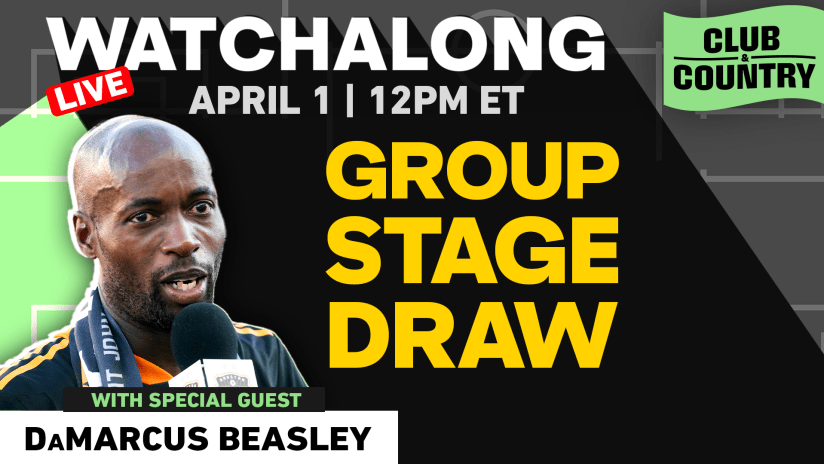The US men’s national team’s primary goal this cycle – or at least in this part of this cycle – was to qualify for the FIFA 2022 World Cup. That’s a pass/fail proposition, and since they’ve officially punched their ticket to Qatar over the past week, they passed the test. It’s a very “C’s get degrees'' kind of moment. I’m choosing to celebrate it, though I understand why a certain subset of fans are left a little bit cold.
So qualifying was the only true objective, but there was still a surfeit of sub-objectives grafted onto that process, all of which are part of head coach Gregg Berhalter’s master plan to “Change the way the world views US soccer.” That is a lofty and also kinda nebulous goal, but I think we can all pretty well understand what he means by it, and it’s worth taking a look at what sort of progress he and the players have (or haven’t) made in bringing it to fruition.
Through basically no fault of his own, Berhalter almost never got to see the entirety of his core group string some performances together and get on a roll. Injuries wreaked havoc with the squad throughout the Ocho, and if it wasn’t injuries it was suspensions or a loss of form.
But the few times he had most of his guys together, the US looked very promising. I don’t think there are any real reservations about the MMA midfield, for example, even though we barely got to see them, and it’s easy to understand how that type of midfield made Sergino Dest an even more effective attacking right back. You could probably write the starting backline and midfield in pen at this point, which is great.
It hasn’t happened quite the same way in attack, but from where I’ve sat, I’ve seen progress.
Not so much in goal, where Berhalter has to have a come-to-Jesus moment regarding Zack Steffen. Berhalter’s been good about dropping other guys who weren’t performing – Gyasi Zardes, Sebastian Lletget, John Brooks, Josh Sargent – but Steffen's been untouchable even when he consistently concedes soft goals and flaps at crosses. The numbers are brutal:
Youngest national team in the world. Five separate teenagers started at least one Ocho game, and six others were at least called into camps. The core of the team is almost entirely under 25, and in all Berhalter used more than three-dozen players throughout qualifying – the most of any coach since the 1990s despite having fewer games.
Some of this was forced by the injuries, suspensions and loss of form mentioned above. But forced or not, the coach threw this generation of kids into the deep end as soon as they showed they could dog paddle, and a ton of them delivered.
This goes hand-in-hand with the “rising talents” part of the project, but it’s not precisely the same thing. Walker Zimmerman, for example, was one of the four most valuable players of qualifying, and yet was not a factor at all in the first window. His rise – and Berhalter’s willingness to recognize it – was a pretty big box to check here, and a way of surviving the injuries to Aaron Long and Chris Richards, as well as the exile of John Brooks. But Zimmerman’s 28, so not precisely a rising talent.
More to the point, there are two spots where it hasn’t really worked out like that:
- The primary backup left back, George Bello, struggled every time he took the field for the US, and is now doing the same in Germany.
- There are apparently just two trusted d-mids in the entire pool (Tyler Adams and Kellyn Acosta), neither of whom is the primary starter at that spot for their respective club teams.
Either of those depth issues could prove fatal come November. I think Berhalter’s got to address them in a more meaningful way than he already has between now and then.
If I went further here, though, I’d be nitpicking. I don’t rate Gianluca Busio, for example, and Berhalter clearly does. I’d prefer to see Paxton Pomykal, Tanner Tessmann or Eryk Williamson as the fourth No. 8 on the depth chart, but we’re talking about the fourth No. 8 on the depth chart. It’s not a make-or-break role.
Credit for trying, but Ricardo Pepi’s not done cooking, and Jordan Pefok takes too much off the table in every other facet of the game to keep him out there just for his finishing, and Jesus Ferreira might take too much off the table in terms of his finishing to keep him out there for what he does in every other facet of the game, and Daryl Dike’s hurt, and Zardes played his way out of the mix, and none of the other young (or old) options have made their case.
The one that hurts the most is Sargent. I wrote repeatedly, starting with literally the column after the Couva disaster, that his development into a quality center forward was one of the most important variables staring at the US for this cycle, and potentially for the rest of the decade. He was the first elite center forward prospect the US had produced since Jozy Altidore.
He has not turned into an elite center forward. Instead, Sargent is now a low-usage defensive winger for one of the worst teams in the EPL. And even when Norwich go down to the Championship at the end of the year, Teemu Pukki’s expected to stay on, which means that Sargent will most likely continue to be a low-usage defensive winger at a lower level. It is maybe the worst-case non-injury-related outcome I’ve ever seen for an elite US prospect – even Freddy Adu had one kick-ass Gold Cup showing. Sargent, meanwhile, is on track to have a national team career about a third as good as Bobby Wood’s.
Part of the No. 9 struggles definitely fall on Berhalter, though. As coach of the Crew he was brilliant at carving out attacking patterns that got his No. 9s one-touch finishes in the box. There has simply not been enough of that from the US, despite the fact that the US topped the Ocho in xG and xG differential, as per TruMedia via StatsPerform.
Anyway, it’s starting to feel like we could see a reprise of the 2010 cycle, when Herc Gomez and Edson Buddle got hot in the six months leading up to the World Cup and played their way into the team. Precisely no one in the center forward mix has made themselves undroppable, and it’s pretty clear that anyone who starts banging home goals – in Europe, or MLS, or Mexico, or wherever – is going to get a chance to win a job.
This is the “Change the way the world views US soccer” segment, because this segment is about playing pretty, possession soccer. It’s about playing with the ball instead of the traditional US approach of playing against it.
Ironically, then, the system was a gem for its defensive utility. The US controlled the home game against Mexico and strangled them to death, and when they went on the road against that same El Tri side they were almost never under pressure. Overall they had the best xGA in the Ocho, and were only let down by subpar goalkeeping.
Turning possession into penetration was a tougher climb, to the point that Berhalter even kind of scrapped The System (in part, anyway) for this final window. The US were much more direct, hit the fewest switches of play, and against both Mexico and Panama were down below 40% possession. The defensive structure didn’t change, but in some ways it felt like the principles of play kind of did.
Credit to Berhalter for being pragmatic enough to adjust – doing so was clearly the right call. I’m also going to credit him for being brave enough to attempt to put into place such a ball-dominant and potentially dynamic system in the first place, even if it was only rarely the latter. I really do think it’ll serve this group well on the manicured fields of the World Cup proper, even if it, at times, made qualifying a more frustrating process.
One other thing to note here: The players love trying to play like this. They are bought-in on Berhalter’s vision for how he wants this team to play.
Third place gets you to the World Cup. It does not make you the kings of Concacaf (and, by the way, somebody should let Canada know that first place does not get you a trophy. But anyway), and so this was mostly a failure. I can’t give an F, though, because “Become the Kings of Concacaf” has always been synonymous with “Be better than Mexico.”
And the US were! They took four points from two games, and were the better team in each. Even that comes with a caveat, though, as the US finished behind an El Tri team that has had massive struggles of their own throughout qualifying.
Here was the biggest issue: The US took only one road point, combined, from the other top teams (Canada, Mexico, Costa Rica, Panama). In some of these, Berhalter got the team wrong (Panama and Costa Rica), and in others, he got it right and players didn’t deliver (Pulisic & Pefok at Mexico; Matt Turner at Canada; Zack Steffen at Costa Rica).
When that happens, you’re not the kings of anything. But the US are going to the World Cup anyway – that was the job, right? – and I’m already anticipating a 2023 Gold Cup that’ll have some extra spice.














